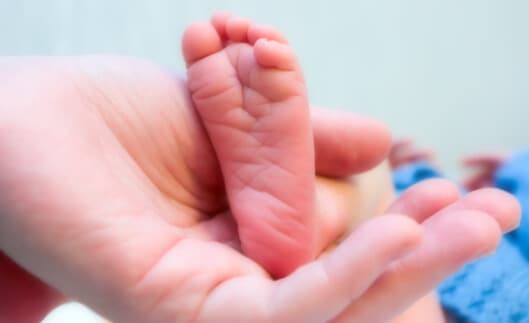SIDS, The Family Bed, & The U.S. Consumer Products Safety Commission

The U.S. Consumer Products Safety Commission and the JPMA have launched a new national safety campaign urging parents not to ever bring babies to sleep with them, but to always put them to sleep in cribs that meet current safety standards. (Note: the JPMA is the Juvenile Products Manufacturer Association – the association for crib manufacturers). This warning was issued because a total of 180 children (out of more than 12 million in the age range) died in an adult bed during the three years studied. This is certainly tragic. BUT, during the same period, many thousands died in cribs! I can see no justification for warning parents never to sleep with their kids!
Which is really safer? The only way to know is to learn how many kids sleep where, and for how long — statistics we just don’t have yet. But we do know a lot about the kids who die.
A recent review of all the SIDS cases in Alaska over a period of six years was published in the October 2001 issue of Pediatrics. It was consistent with previous studies. Far more important than where a child slept was the sleeping position and the parents use of tobacco, alcohol, antihistamines, or other drugs. During 6 years, 130 children died of SIDS. Only 2 children died face up in a crib; only one died face up in bed with a non-drug-using parent on a non-water mattress. Fully 98 percent of cases were associated with other risk factors.
In May 2002 the U.S. Consumer Product Safety Commission announced their major campaign to reach new and expectant parents, day care centers, hospitals, medical facilities, and retail outlets with their message to use cribs, and never to sleep with a baby. The announcement was made at a press conference at the annual International Juvenile Products Show in Dallas, Texas. I called the CPSC to see if there was any science or reason for their promotion. They offered none. What a disservice to parents — especially in light of what the CPSC calls their “significantly limited monetary and staff resources”. Instead of spending so much on a recommendation without a shred of proof, I wish their efforts had targeted the other 98 percent of SIDS cases.
Parents who choose to sleep with their babies (a wonderful choice for many families) should be taught how to do it safely. Anything that makes parents more difficult to wake up or anything that hinders babies’ ability to breathe should be avoided.
Babies are safer sleeping next to someone who is aware of their presence and easily awoken. Usually, this is the mother. Fathers, siblings, and babysitters do not tend to wake up as easily when needed, though there are exceptions.
Whoever you are, don’t sleep with a baby if you are taking something (alcohol, antihistamines, or other drugs) that makes you less aware of the baby when you sleep. The same holds true if you are so sleep-deprived that you would have difficulty waking up if the baby were in need.
Tobacco smoke, adult obesity, over-bundling, excess bedding, waterbeds, couches, and chemical irritants (fragrances that might irritate a baby’s nose and clog the air passages) could all make breathing dangerously difficult for babies.
Teaching babies to sleep in their own cribs is a good option for some families; sleeping with their babies is a good option for others. Many babies sleep in a crib most of the night, and then join the parents after the last feeding for some snuggle and sleep time together before starting the day.
Whatever arrangement you choose, enjoy these unrepeatable months when your child is a baby, and learn what you can about what helps you and your baby to thrive.


